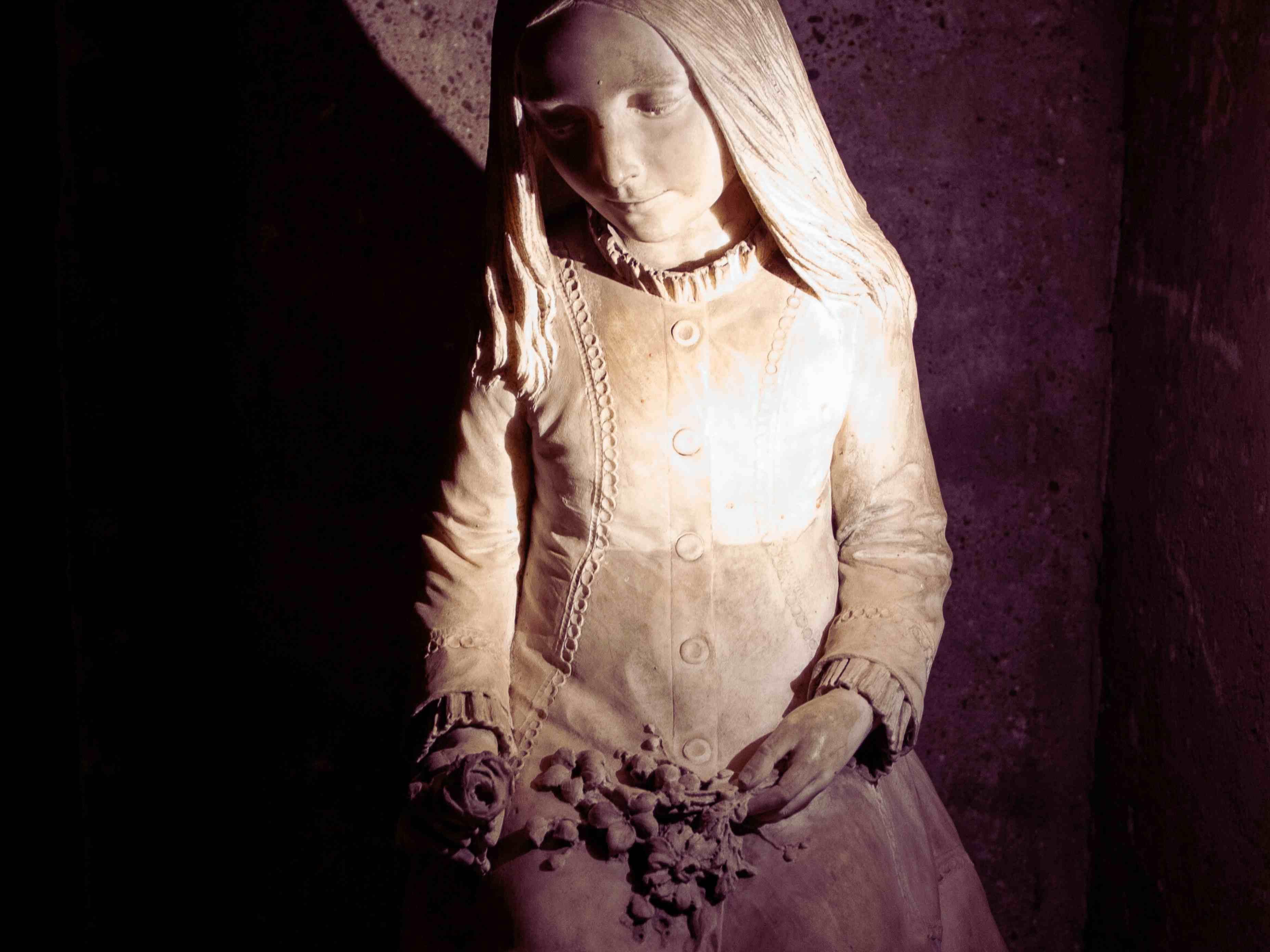University museum network
The University museum network covers a wide range of fields, from science to technology, from medicine to the humanities. The exhibited items testify to the evolution of a multidisciplinary body of knowledge, built up by scholars, but also dedicated amateurs, who pursued the most various intellectual interests.
The collections have a genuine historical and documentary value: some items used to belong to the old institutions that merged into the University of Milan, while others are tokens of the century-long journey that led us, our University and our city, up to the present day.
Over time, the University of Milan has also published some graphically exquisite books on the history of the University and its artistic and scientific legacy.
The last piece of this puzzle is the VUMM (Virtual UniMi Museum), the online museum launched by the University to celebrate its 100th anniversary. The VUMM boasts more than 2,000 digitalised images of the artworks and artefacts owned by the University of Milan, bringing this extraordinary cultural heritage closer to the public.
Guided tours to discover the headquarters of the University of Milan
"I giovedì in Ca' Granda" is a series of guided tours to discover the architectural complex hosting the headquarters of the University of Milan (a.k.a. the Ca' Granda, located in Via Festa del Perdono 7) as well as its modern and contemporary artworks. The tours are open to everybody — citizens, tourists, and the academic community — and held on Thursdays, hence the name of the initiative. There are two types of guided tours, each with a different focus:
- Historical and architectural tour (duration: approximately 60 minutes)
This tour has been designed in the framework of the workshop "The Ancient Hospital of Milan. How to Lead A Guided Tour of An Historical Monument", taught by Professor Folco Vaglienti, and will move from courtyard to courtyard starting from the "Cortile del Richini", which dates back to the 17th century.
- Modern and contemporary art tour (duration: approximately 40 minutes)
This tour passes by modern and contemporary artworks displayed at the Ca' Granda, including the iconic Minerva by Lucio Fontana, the untitled installation by Jannis Kounellis located in the hall of the teaching sector, and the imposing Saint Ambrose by Adolfo Wildt.
Guided tour schedule until September 2025.
|
Tour |
Time |
Date |
|
Modern and contemporary art tour (approximately 40 minutes) |
17:00 |
20 February 2025 17 April 2025 15 May 2025 19 June 2025 18 September 2025 20 November 2025 18 December 2025 |
|
Historical and architectural tour (approximately 60 minutes) |
17:00 |
13 March 2025 8 May 2025 5 June 2025 3 July 2025 4 September 2025 2 October 2025 6 November 2025 4 December 2025 |
All tours are free of charge, but registration is required. Interested participants can register via our event calendar. Registrations open one week before each tour.
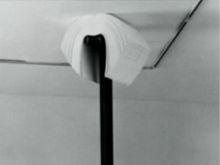
L’Università degli Studi di Milano partecipa a ICOM - Giornata Internazionale dei Musei con visite alla collezione di arte moderna-contemporanea conservata nello storico edificio della Ca’ Granda, in via Festa del Perdono 3.
In tali occasioni, si potrà conoscere più da vicino la storia del magnifico edificio rinascimentale, nato nel XV secolo come Ospedale per volontà di Francesco Sforza e, dal Secondo dopoguerra, sede centrale dell’Università degli Studi di Milano.
La Ca’ Granda, fin dalla sua fondazione, rappresenta un punto di riferimento, in grado di ispirare quel senso di appartenenza e di rispetto per la cultura e la storia del popolo milanese.
Gli antichi cortili e l’ala moderna sono da sempre luoghi di incontro e confronto tra culture, e sono diventati spazi espositivi privilegiati, accogliendo le opere di arte moderna e contemporanea.
Giovedì 22 maggio alle ore 12:30, 13:00 e 17:00 sono previsti tre turni di un tour guidato gratuito per scoprire questi luoghi e le opere di arte moderna e contemporanea che ospitano, a firma di grandi artisti: Lucio Fontana, Jannis Kounellis, Adolfo Wildt, Mikayel Ohanjanyan.
Visita guidata gratuita aperta a tutti su prenotazione, posti limitati. Iscrizioni aperte dal 13 maggio.
20 March, which is also the international Day of Happiness, has been designated by the Conference of Italian University Rectors (CRUI) as the national “Day of Universities”. The day is part of the so-called "Week of Minerva", a period dedicated to the celebration of knowledge and education. For the occasion, the University of Milan is opening the doors of its historical campus, the Ca’ Granda, with a series of guided tours.
We will start from the “Cortile del Richini”, the central courtyard dating back to the 17th century, and move from courtyard to courtyard to admire exceptional examples of modern and contemporary art, including the iconic Minerva by Lucio Fontana, the installation by Jannis Kounellis, and the imposing Saint Ambrose by Adolfo Wildt.
Each tour lasts about 45 minutes. Tours start at 10:00, 15:00, 16:00 and 17.00.
Guided tours are free of charge. Registration is required, as places are limited.
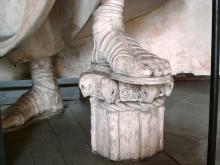
The old courtyards and the modern wing of the University central campus, the Ca’ Granda, are a meeting place for cultures and have often served as special exhibition areas, hosting works of artists from all over the world.
For this year’s Milano Art Week, the University has organised two free guided tours of the modern and contemporary artworks hosted on campus. The tours will take place on Thursday, 3 April at 15.00 and at 17.00 and include works by Lucio Fontana, Jannis Kounellis, Adolfo Wildt and Mikayel Ohanjanyan.
Registration is required (free of charge) as places are limited.
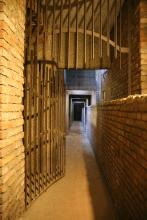
The University of Milan participates in MuseoCity 2025 by offering guided tours of the Ca’ Granda, its historical building in via Festa del Perdono 7.
During the tours, participants will get to know the history of this architectural complex, which now hosts the main campus of the University, but was first erected as a hospital by order of Renaissance lord Francesco Sforza. Its magnificence lies not only in what is visible: the Ca' Granda has a maze of underground passages and spaces, which were once used as storage rooms, or for other activities linked to the daily life of the hospital.
On the occasion of MuseoCity 2025, these parts of the Ca' Granda will be open to the public for the first time, thanks to a special tour which will explore remarkable underground structures, ancient distilleries and wells.
The tours are free of charge and available upon registration, until all places are taken. Registrations open on 20 February.
Thursday, 6 March
Tour reserved for UniMi students and staff: at 12:00
Tours reserved for external visitors: at 13:00; 16:30; 17:00
Friday, 7 March
Tour reserved for UniMi students and staff: at 12:00
Tours reserved for external visitors: at 13:00; 16:30; 17:00
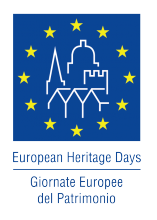
On 24 September 2023, the University of Milan is organising a series of guided tours to the historical complex of the Ca' Granda, to celebrate the European Heritage Days. These guided tours will be a unique chance to learn more about the history of this magnificent architectural complex, which dates back to the Renaissance and has served as headquarters of the University of Milan since the late 1950s.
The tours will start from the central courtyard – also known as "Cortile del Richini" after architect Francesco Maria Richini – and cover several courtyards designed in the 15th century. We will also admire important modern and contemporary artworks, such as the Saint Ambrose by Adolfo Wildt, the Minerva by Lucio Fontana, Senza Titolo 2005 by Jannis Kounellis and Prospettiva Introversa #11 by M. Ohanjanyan. Students, professors and employees of the University of Milan study and work next to these masterpieces on a daily basis.
This invaluable heritage has further benefited from the creation of the Virtual Museum of the University of Milan (VUMM). Visitors can now scan the QR codes placed along the tour to access the VUMM website and learn more about the place or artwork which they are admiring.
Tours on Sunday, 24 September 2023, will start at 10:00, 11:00, 14:00, 15:00, 16:00, 17:00. Each tour lasts approximately one hour.
The Labanof Laboratory of Anthropology and Forensic Odontology reconstructs and analyses skeletal remains, using the tools of anthropology, forensic medicine, pathology, archaeology, natural sciences and biology.
It works on unclaimed human remains, both recent and historical, from archaeological excavations, cemeteries and crime-related contexts.
Rooted in the respect for human dignity, this is an important scientific and educational work on materials that are valuable sources of information, as well as tools for the defence of human rights, the proper application of justice and the rediscovery of our history.
The Laboratory houses the largest collection of identified modern skeletal remains in the world: the Labanof Anthropology Collection (CAL), including over 2,000 modern and over 300 ancient skeletons.
Hosted by the Forensic Medicine section of the Department of Biomedical Sciences for Health of the University of Milan, the CAL has been recognized as a unique Museum Collection by the Lombardy Region.
The mission of MUSA is to disseminate the role and importance of medical, anthropological and forensic sciences in contrasting violence and protecting human rights.
The disciplines at the heart of MUSA are those concerned with the study of the human body in all its forms, to reconstruct the past, remote or recent, through the examination of the cadaver, the skeleton, but also of the living.
Under the lens of science, bruises on a body reveal the abuse on a child, bones give back an identity to a body without a name, gunshot residues and fibres reconstruct the dynamics of a murder.
With these disciplines not only can we protect today’s victims and take preventive action, but also help administer justice and reconstruct who we were in ancient times, to better understand the trajectory of social phenomena such as violence and discrimination.
Many of us know that medicine and science can cure infections, cancer and several other diseases, but only few are aware of the essential role that these disciplines play in the fight against the violations of human rights. This is the knowledge gap that MUSA intends to fill.
Created in 1934 thanks to Achille Vogliano and to the excavations of the ruins of Tebtynis and Medînet Mâdi, in Egypt, the Collection grew further in the mid-1960s, with the reopening of the Medînet Mâdi site.
In 1992, it acquired the precious roll dating from the 3rd century BC that jump-started the rediscovery of Posidippo from Pella, one of the most significant poets of the early Hellenistic period.
The Collection is one of the few in the world that have all the papyrus and Greek and Latin ostracon editions printed so far.
It includes almost 1,400 papyri in Greek, approximately one hundred in Hieratic and Demotic, a few dozen in Coptic and around fifty in Arabic, which can be dated between the 3rd century BC and the 11th century AD, as well as 200 Greek, Demotic and Coptic ostraca, about twenty wooden and wax tablets, a sheaf of Arabic sheets and a very rare written-in bone.
the collection was created to preserve explorer and geologist Ardito Desio's finds from his non-European expeditions since the 1950s. It has been constantly expanding with the finds from scientific research activities in Italy and abroad, and is today a landmark collection for specialists.
The most significant collections include thousands of micro-palaeontological specimens, Triassic and Jurassic ammonoids, Asian Permian Brachiopods, Italian Plio-Pleistocene molluscs.
Francesco Garnier-Valletti was one of the last model makers of the 19th century to produce replicas of flowers and fruits for scientific and documentary purposes: thousands of items perfectly similar to the originals not only in form and colour, but also in weight. He named his work “Pomona artificiale” (“Artificial Pomona”).
His "secret" was a specially designed material which, when softened by heat, could be worked, smoothed, shaped and set, but once cooled, acquired the consistency and resistance of plaster, yet without its brittleness or weight.
The Garnier-Valletti collection is housed in the Department of Agricultural and Environmental Sciences and consists of 1,600 models of fruit and grape varieties.
The beautiful collection catalogue features annotations, over 12,000 drawings, and notes by Garnier-Valletti, which are kept at the Turin Academy of Agriculture, documenting the names, varieties, production seasons and organoleptic properties of the reproduced fruits.
The "Luigi Devoto" Occupational Clinic Collection
This mostly bibliographic collection bears witness to the creation of research and care institutions that still operate in the area today.
Library of the Department of Occupational Medicine
Via S. Barnaba, 8 - 20122 Milan
Tel. 02 50320106
Fax. 02 50320106
[email protected]
Medical equipment and materials
The collection includes mainly obstetric instruments and materials dating back to the late eighteenth and early nineteenth centuries.
Collection of wax models
Housed in the Dermatology Clinic of the Department of Health Sciences, it documents the development of pathology models for medical training, dating back to the late eighteenth century.
Dermatology Clinic
Via della Pace, 9 – 20122 Milan
Tel. 02 50320776
Fax. 02 50320779
[email protected]
The Alfieri Fund, merged into the APICE Centre, was acquired by the University in 1953.
It includes approximately 5,600 volumes, a thousand pamphlets and as many issues of periodicals once belonging to physician and bibliophile Emilio Alfieri (Milan, 1874-1949), who became the director of the obstetrics and gynaecology clinic of Milan in 1927 after Luigi Mangiagalli, founder and first rector of the University.
The Anatomical Museum of the Department of Veterinary Science preserves over 1,500 valuable specimens, representing mammals and domestic birds.
The myological statues and mummified specimens are particularly interesting.
The Museum also has a remarkable collection of historic surgical instruments and histological finds and specimens gathered since the mid-nineteenth century.
The Library and Archives contain the documents and records of five of the most important egyptologists of the 19th and 20th centuries:
- Auguste Mariette, whose 135 letters from 1850-51 are accompanied by copies of hieroglyphic texts and related comments
- Heinrich Brugsch
- Victor Loret, whose archive contains manuscripts concerning the Saqqara digs and the Museum of Boulaq, as well as notes, drawings, maps and watercolours related to the Valley of the Kings and diaries of the excavations of the tombs of Thutmose III and Amenhotep II
- Alexandre Varille, whose library comprises many valuable treasures, such as 16th-century volumes by Mercati and 18th-century volumes by Norden, as well as copious archives containing over 40,000 historic and modern photographs of Egyptian sites
- Elmar Edel, whose archive contains hundreds of pages of mostly philological notes, as well as drawings, photographs, facsimiles of inscriptions and approximately 300 letters.
A further acquisition was made in 2007, when the American egyptologist William Kelly Simpson donated his letters to the University.
The materials in the archives, and particularly Victor Loret’s excavation journals, were the subject of a book containing many photographs, which was published by the University of Milan in 2004: La valle dei re riscoperta. I giornali di scavo di Victor Loret (1898-1899) e altri inediti. (The Valley of the Kings Rediscovered. Victor Loret's excavation journals (1898-1899) and other manuscripts).
Tel/Fax 02 50312315
[email protected]
[email protected]
[email protected]
Established in 2004, the Museum includes materials from collections dating back to the 1940s, thanks to Emanuele Grill, then director of the Institute of Mineralogy.
In 1937, he bought the collection of minerals and rocks belonging to the heirs of Eugenio Bazzi, which was known throughout the scientific community, and still is at the core of the Museum.
The Museum's portfolio expanded in the 1960s, with the set-up of a regional alpine collection and one of synthetic and natural hard stones – both rough and cut – in addition to the increase of rock samples, representing the main lithotypes in Italy and other areas of the world.
The acquisition of a collection of ornamental stones used in the construction field, and the set-up of a vast collection of mineral deposits from all over the world also date back to the early 1960s.
The collections
- Mineralogy
about 10,000 mineral specimens (1,400 exhibited) - Gemmology
about 300 samples of natural and synthetic gems (250 exhibited) - Petrography
about 30,000 rock samples (1,000 exhibited) - Mining geology
about 3,000 mineral deposit samples (900 exhibited)
The showcases display educational materials such as the atomic structures of minerals and models of crystalline polyhedra, scientific instruments of historical interest, valuable antique books, period geological maps and teaching tables.
The collections have been recognized as Museum Collections by the Region of Lombardy for the importance of their scientific and cultural Heritage.
Founded in 1994, the Educational Museum of Zoology has a historical collection of:
- about 200 zoology educational wall charts
- one hundred entomological boxes of the early twentieth century
- educational books and anatomical models
The Museum also preserves photographic and optical instruments, including the Siemens Elmiskop 101 transmission electron microscope.
Collection of historical materials inherited from the Royal Higher School of Agriculture. At the end of the nineteenth century, the School began organic studies in basic and applied entomology and launched the first courses in beekeeping, entomology and sericulture, a subject of great interest, at the time, as natural silk production was strong in the region.
In addition to eighteenth- and nineteenth-century volumes, treatises and monographs, the collections feature wall charts, papier-mâché models of silkworms, entomological boxes and insect collections, such as the Tirelli beetle collection and the Del Guercio aphid collection.
The University museum network includes the three botanical gardens of Brera, Città Studi in Milan, and G. E. Ghirardi in Toscolano Maderno (BS).
These botanical gardens have become green oases and key areas for the local community by offering social, cultural, and scientific-dissemination activities throughout the year.
The botanical gardens of the University are like open-air living museums, which can thrill and surprise visitors in every season.
Inaugurated in 2016 with Mikayel Ohanjanyan's first Milanese solo show, "La Statale Arte" confirms the University's vocation as an open place, an agora in the heart of Milan, where to discuss and explore contemporary issues.
In later solo shows, Nanda Vigo and Paolo Icaro created site-specific works for the splendid architectural spaces designed by Filarete in the mid-fifteenth century, a privileged place for dialogue between historical monumental art and interpretations of our present time.
The "La Statale Arte" project also includes the creation of a permanent gallery which today hosts the works left to the University by Ohanjanyan and Vigo, on display in the Crociera Hall on via Festa del Perdono, and the impressive work of Jannis Kounellis, almost 5-and-a-half-metres high that has joined other important twentieth-century artists already featured in the historic building of Ca' Granda – from Wildt to Fontana.
The University of Milan boasts many collections, all located in different spaces – from the historic headquarters on via Festa del Perdono, to the various department offices.
To make them available to the public, the University is building a virtual path that highlights their beauty as well as their historical and scientific value.
Part of this heritage had already been displayed in a real exhibition – "Il tesoro della Statale", or the University's Treasure – in 2004, when the University celebrated the eightieth anniversary from its foundation. The exhibition catalogue was published by Skira under the title Il tesoro della Statale. Collezioni e identità di un grande Ateneo (The University's Treasure. The Collections and Identities of a Major University).
Simmetrie, giochi di specchi (Symmetries, mirror effects)
Hosted by the "F. Enriques" Department of Mathematics, this interactive exhibition allows you to experiment the mathematical theme of symmetry through the reconstruction of all the bi- and tri-dimensional groups generated by reflections.
Matematita
The University is also part of Centro Matematita, supervised by the Interuniversity Research Centre for Communication and Informal Learning of Mathematics, which designs, makes and disseminates informative products (exhibitions, books, magazines, multimedia material) and studies their impact levels.


